
Poor PPT writing, always being scolded by the leader? It takes a week of baldness to write a PPT? The same is writing PPT, colleagues are better than you?
Don't panic, from 0 to 1, teach you to easily write an excellent PPT! Use one universal formula and you're done! Dry goods are coming!

After reposting the article, click on my profile picture, private message the keyword [high-quality template] to get the mysterious gift package I prepared for you!
Many masters who can do PPT design, but can't complete PPT writing (how to prepare PPT content), the reason is simple: PPT writing tests logic ability! Rather than design ability! Logical ability is a comprehensive skill.
Then how to write the content of PPT? In this article, I will share my method.
It's very simple, there is no professional theory, it's all in plain language (I have translated the theory into something you can understand), and you can understand it after reading it.
My method is divided into three steps, namely:
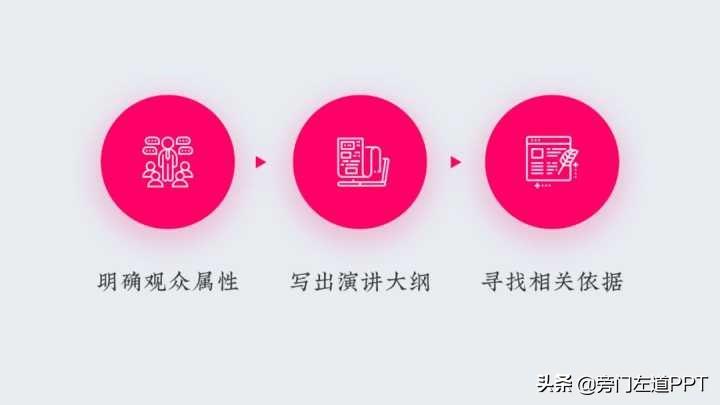
What does that mean? In order to facilitate everyone's understanding, I will explain them one by one with an example that I made up.
For example, if we want to partner with a friend to open a pancake and fruit shop in the community, you need to write a PPT, tell him, how would you write it? Let's try it together.
The first step is to clarify the attributes of the audience
In layman's terms, it is to know who your audience is. This is the most basic point, because only by knowing this, can we determine the focus of sharing content.
It can be divided into two points here. Friends either know the pancake and fruit industry, or they don’t. Then, there must be differences in their focus:
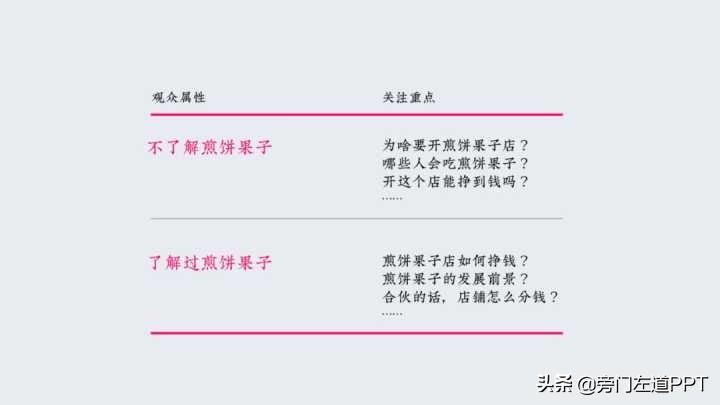
The second step is to write a logical outline
This point means that You have to understand the overall context of the speech and decide what content to share with others. This is the most critical step.
What does that mean? Let’s also take the previous Jianbingguo as an example. Assuming that your friend didn’t understand Jianbinguo before, how should we write our logical outline?
01. Pancake fruit and the basic situation of the community
Let’s start with the big aspects and express why we choose to sell pancakes
- Pastry food is liked by many young people;
- Pancake fruit is a popular and good product;
- Among the residents in the community, young people are the majority;< /li>
- The rent of shops near the community is cheap;
- There are fewer snack bars around the community;
02. Who will eat pancakes?
Professionally speaking, it is user portrait
- Young office workers
- Primary school students
- . . .
03. Who are the competitors near the community?
Tell me about other bakeries
- Cake Shop A
- Bake Shop
- C Bakery
04. What else can pancake and fruit shops do in the future?
Where else can I make money?
- Sell hot and sour noodles;
- Sell milk tea drinks;
This one is easy to understand, right? And, at this point, We already have the title of each PPT page, which is every little point in the logical outline:
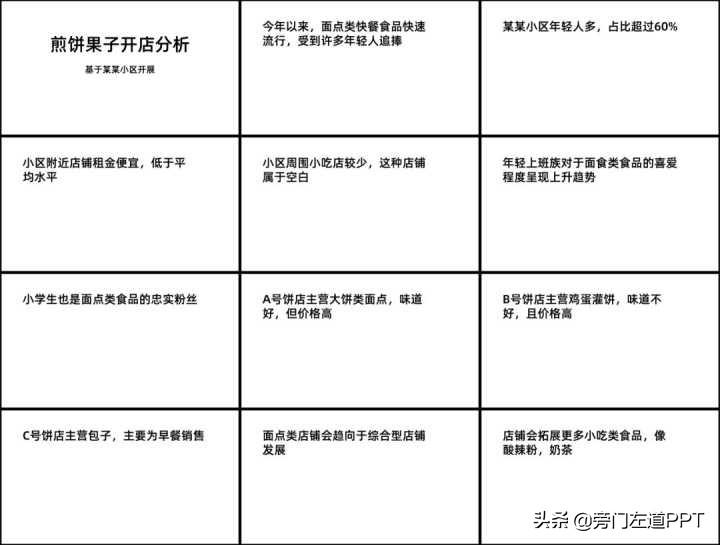
The third step is to find relevant evidence
This step is mainly to enrich the outline listed above, so that every sentence you say can be credible. What does that mean? For example, you said earlier that there are many young people in the community, so how is this data calculated? Is the data source a property?
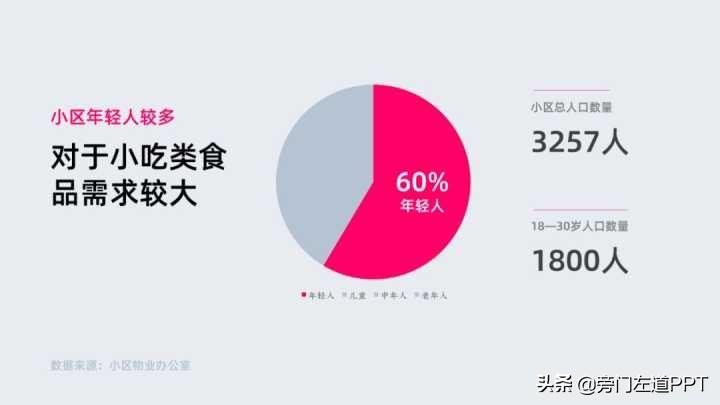
Another example:
- We mentioned that there are other cake shops, so what are the characteristics of each shop?
- Among the customers who come to the store, what kind of people are they?
- ......
These are the processes in which we are looking for evidence and checking various materials to prove our point of view.
When we have completed this step, the content we want to talk about is basically completed, well-founded and clear.
Case Practice
Of course, the above example is a bit too down-to-earth. Next, let's practice this method through a formal topic.
For example, the content of the PPT we want to write is Analysis of online English education and training for children, Then, how should we write the content of this PPT? It doesn't matter if you don't have an idea, let's go step by step.
The first step is to clarify the attributes of the audience
Different audiences have different focus points:

Suppose our audience is the practitioners of the industry.
The second step is to write a logical outline
Since they are industry practitioners, what information do they want to know? We can combine the information we have learned to list:
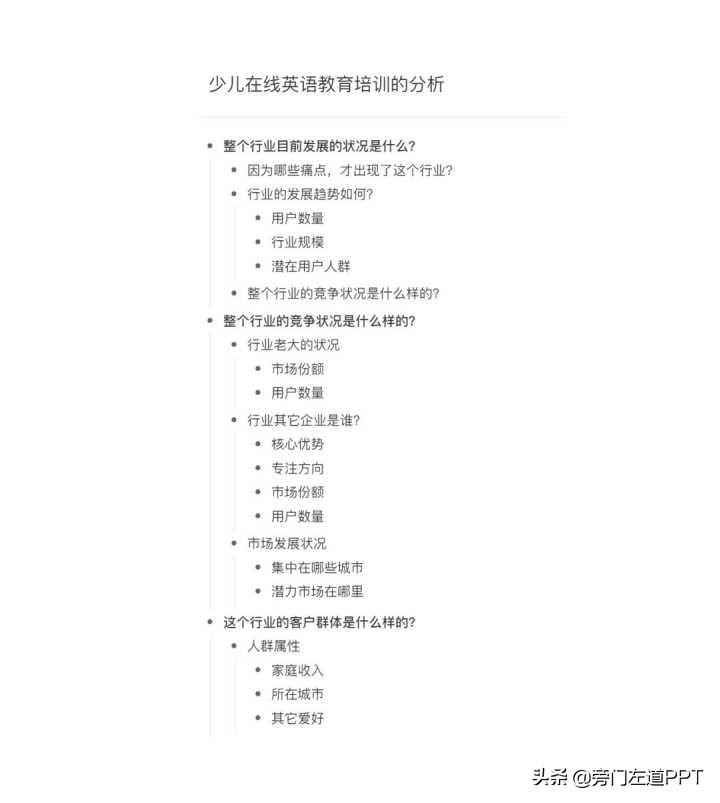
Of course, because I am not a practitioner in this industry, some information may be missing, but I can add it later.
However, at this point, the title content of each page of our PPT is as follows:
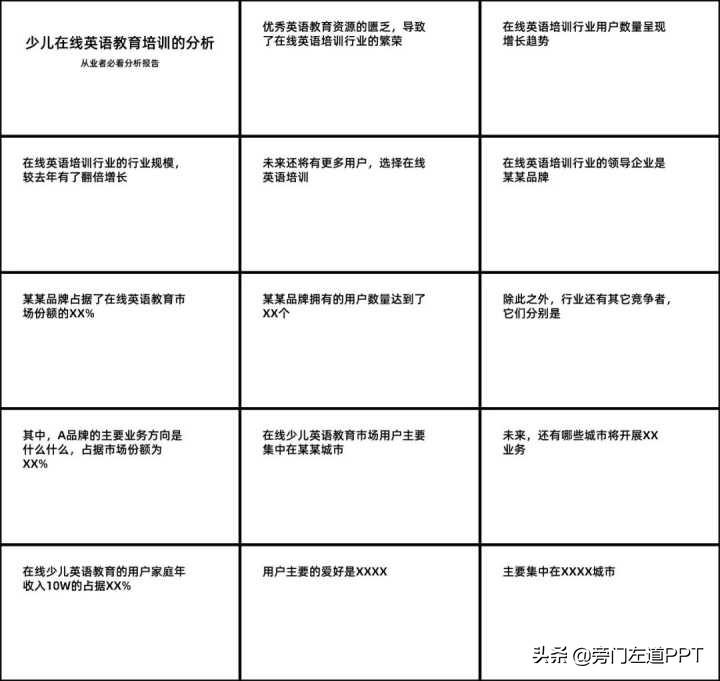
The third step is to find relevant evidence
This requires us to collect some accurate data sources, or collect some authoritative analysis.
For example, as we mentioned earlier, the industry is developing rapidly. Then, how do you prove that the industry is developing rapidly? The most convincing way is to find some data:
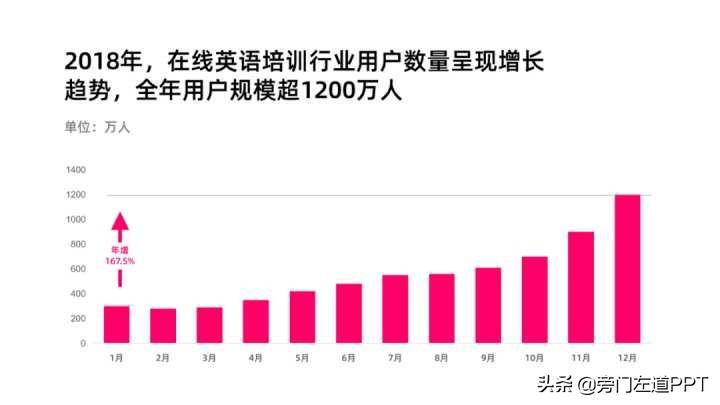
For another example, why does this industry appear? What are the reasons? If you can't analyze it, you can find some authoritative analysis, and you can summarize it comprehensively:
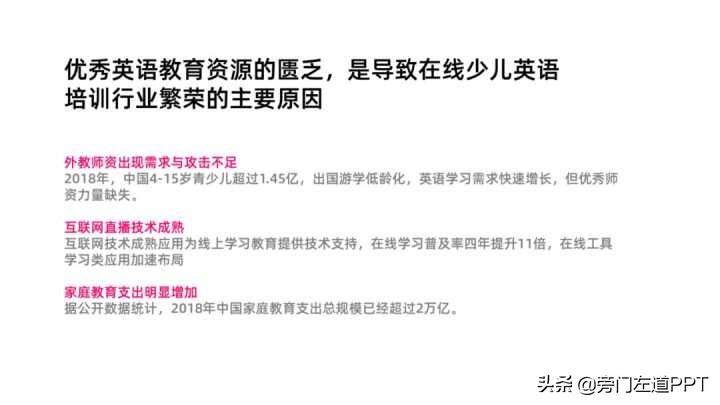
This step is the process of proving your point of view by searching for information, until the content of each page of PPT has been proved, then the content of a PPT is considered finished.
The above is a method I usually use when writing PPT. It is very simple, and it can be summed up as follows:
- Who will listen to my PPT presentation?
- What content points should I mention?
- How to find convincing supporting evidence?
Well, after mastering these 3 steps, you can basically write a good PPT. Of course, if you want to write better, it is best to master some necessary theories! Here are some excellent theoretical concepts to recommend to you:
- Porter's Five Forces Model: The competitiveness of existing competitors in the same industry, the ability of potential competitors to enter, the substitution ability of substitutes, the bargaining power of suppliers, the buyers Bargaining power
- 3C strategic triangle model: the company itself (Corporation) company customer (Customer) competitor (Competition)
- Marketing 4P theory : namely product (Product), price (Price), channel (Place), publicity (Promotion)
- The 4PS theory of marketing: namely product (Product), Price (Price), channel (Place), publicity (Promotion) plus strategy (Strategy)
- SWOT analysis: S (strengths) are advantages, W (weaknesses) are Weaknesses, O (opportunities) is opportunities, T (threats) is threats (Where)——what place Time and procedure (When)——when People (Who)——person responsible Why (Why) ——reason How——how
- PDCA of Quality Management: Plan, Execute (Do), Check (Check), Process (Act)
Of course, there are many theories, and everyone can master some!
Well, I hope this article is helpful to you! Feel good, remember to like it!
I also prepared some small gifts for you: 30 sets of super excellent PPT templates!
Show you some screenshots:

There is also this, just apply it directly!

There are also a lot of excellent templates:


super excellent! (The above is just a small part of the screenshots) If you need it, you can share it with you directly, it is very practical!
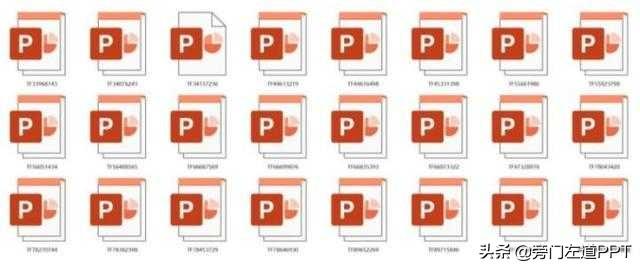
collection method:
1. Forward + like the article
2. Send a private message【High-quality template】Get the high-quality PPT template I downloaded and apply it directly!
Articles are uploaded by users and are for non-commercial browsing only. Posted by: Lomu, please indicate the source: https://www.daogebangong.com/en/articles/detail/Zhihu%20private%20sharing%20How%20to%20write%20an%20excellent%20PPT%20from%200%20to%201.html

 支付宝扫一扫
支付宝扫一扫 
评论列表(196条)
测试